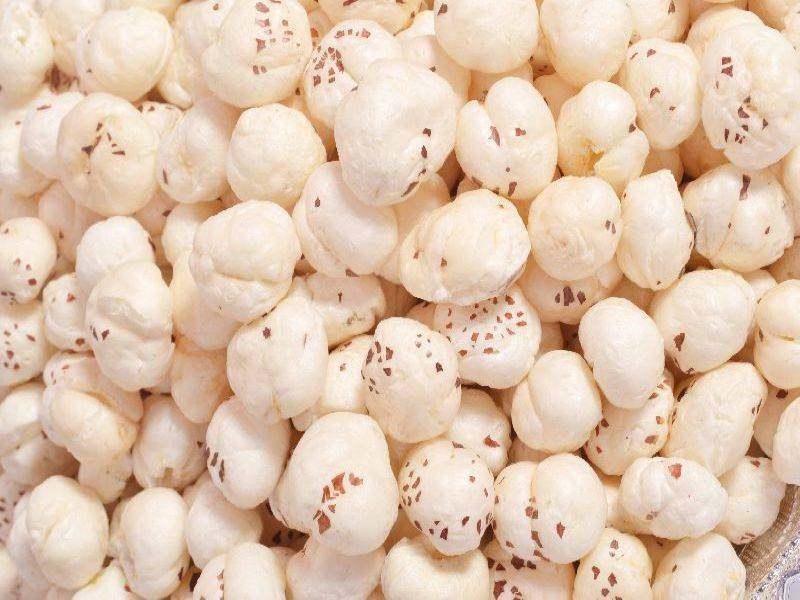
Euryale ferox, also known as the famous makhana, the prickly waterlily, the foxnut, or the gorgon nut, is a perennial plant of the Nymphaeaceae family. It thrives in stagnant water such as ponds, swamps, and wetlands in tropical climatic conditions, much like the lotus.
It produces edible seeds known as makhana, which are widely used in Indian cuisine. A single plant can yield 80-100 makhana seeds. In India, makhana cultivation is primarily practised in West Bengal, Bihar, Manipur, Tripura, Assam, Madhya Pradesh, Rajasthan, and Uttar Pradesh. However, Bihar is the world's greatest producer of Makhana, accounting for 90% of global production.
It has purple blooms on a thorny stem and flattened, rounded green leaves that float on the water's surface, similar to a lotus.
How to grow Makhana – Steps to follow
-
Make ponds or swampy wastelands in your field and sow seeds from the previous crop, the market, or online portals.
-
The pond's depth can range between 4-6 feet and must always have stagnant water. In contrast to traditional cultivation, this does not necessitate processes such as seedling transplantation or seed sowing.
-
Even makhana seedlings can be treated like other nursery plants and placed on the water field between the months of February and April.
-
Harvesting is the most difficult aspect of makhana farming. It asks for the gathering of seeds from the muck at the pond's bottom and necessitates the use of competent personnel.
-
After that, the seeds are dried under full sun exposure to evaporating the moisture and it releases up to 31 percent of the moisture. Then the makhana can be temporarily stored for a maximum of 20-24 days.
-
Then there's grading, which divides sun-dried seeds into five to seven grades based on their size. Cultivators utilize sieves to do this, which is then followed by heating and roasting.
-
The seeds are roasted in an earthen or cast iron pan at a temperature of 250° C – 3000° C, with constant stirring and heating for 4-6 minutes.
-
After that, the cooked seeds are stored for 3-4 days in a dry location. The interior edible part of makhana, i.e. kernel, is naturally separated from the exterior hard shell.
-
The seeds are then beaten with a wooden hammer to separate and extract the kernel from the hard coating after being placed on the ground. The Makhana, or kernel, is rubbed on the bamboo basket to give it whiteness and crispiness. The makhana is then further graded according to size and packaged into gunny bags for storage and transportation.
(Also read: Farmers in Bihar Making Money By Focusing On Weather-Resistant Crop)












